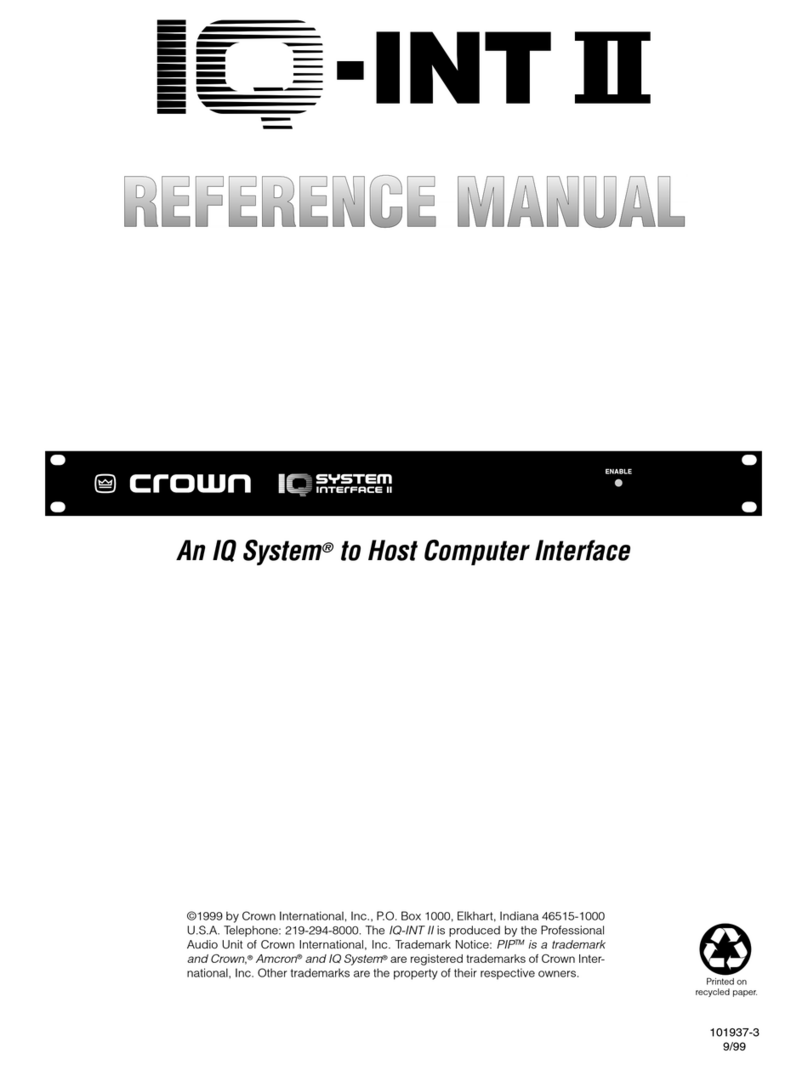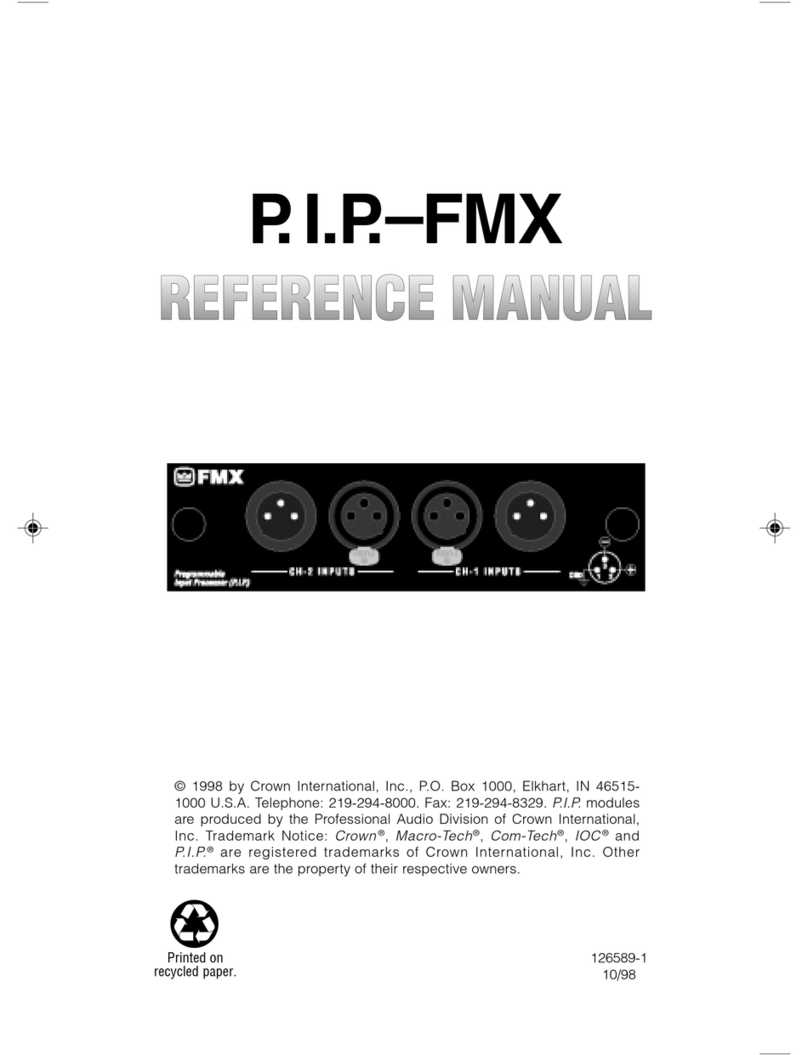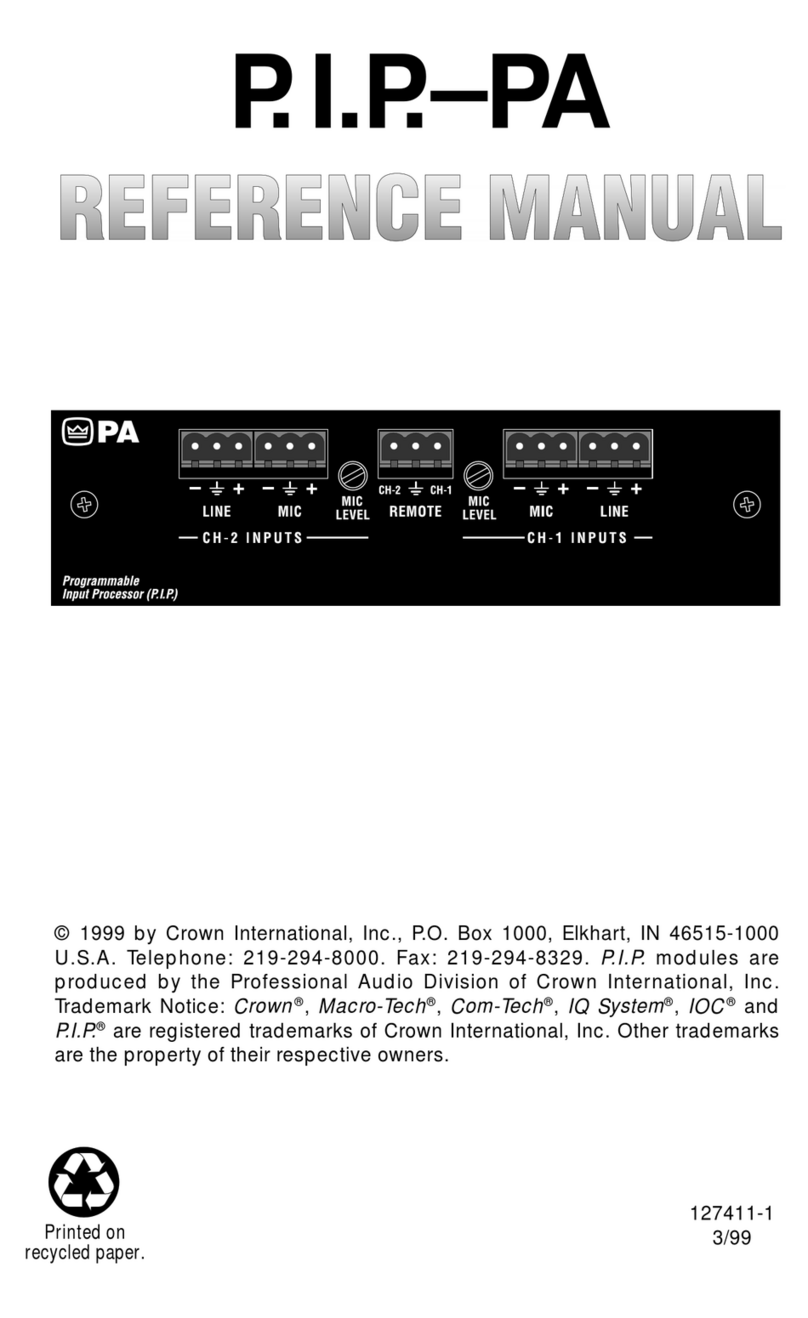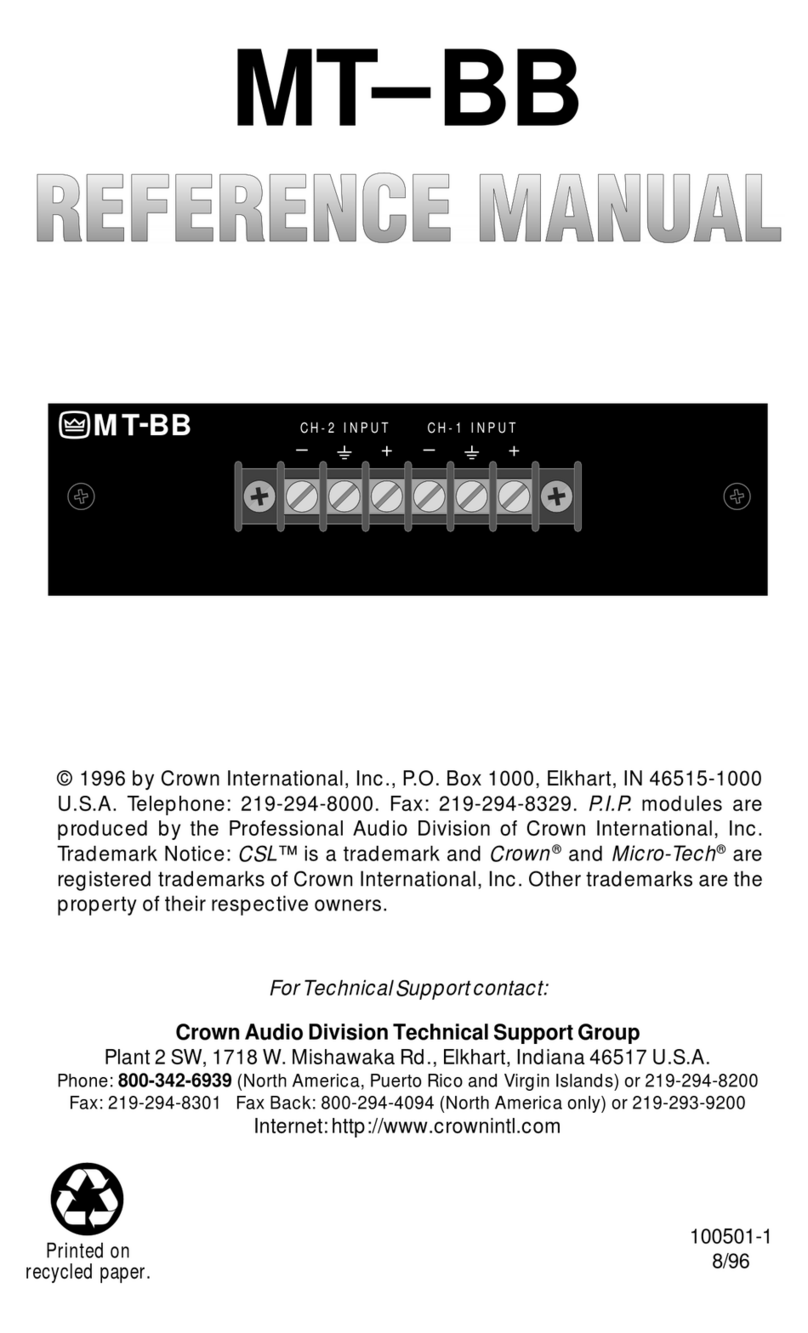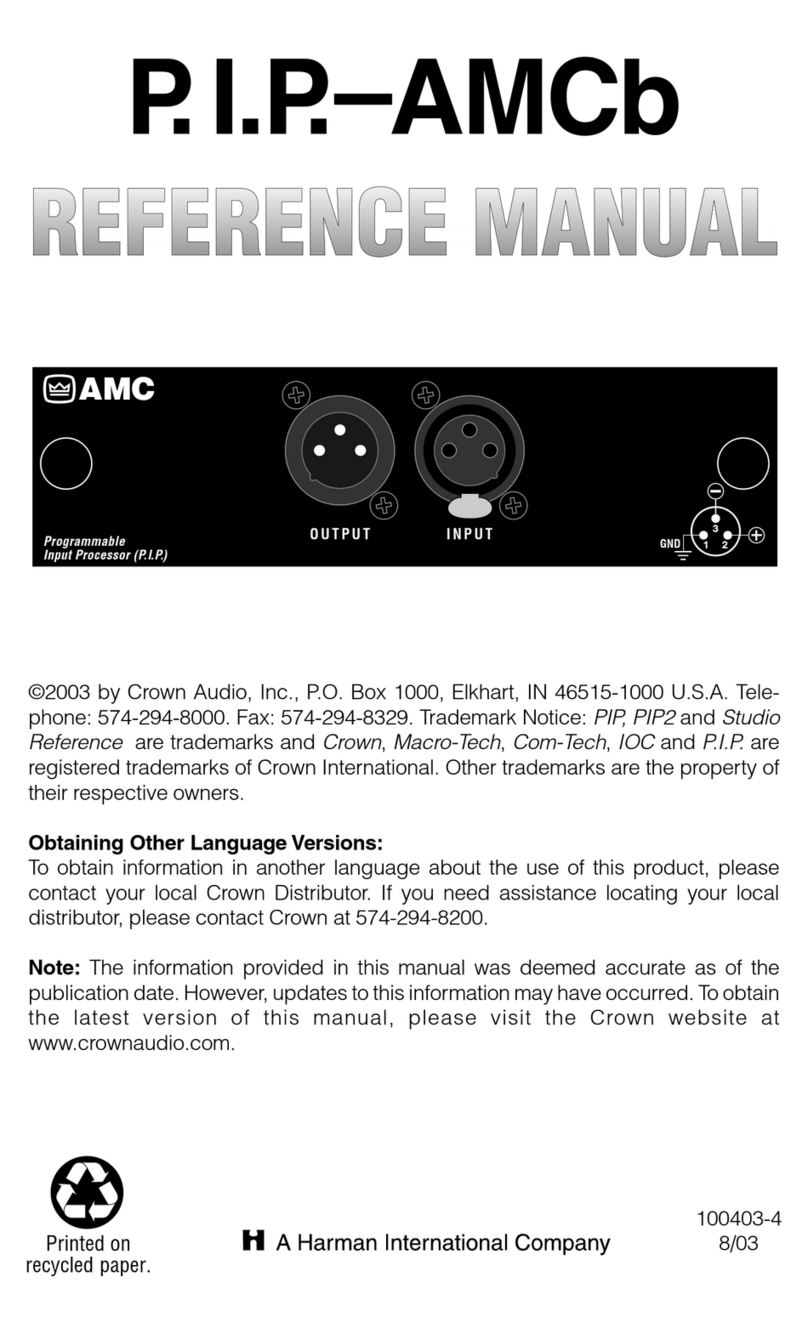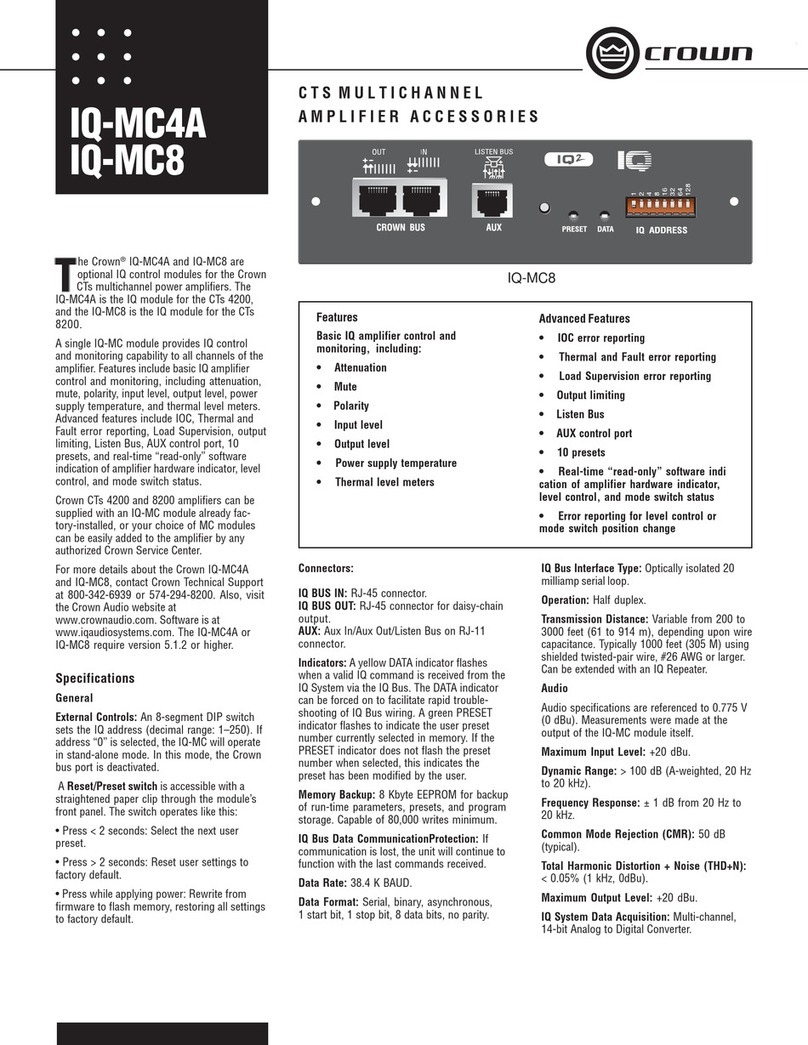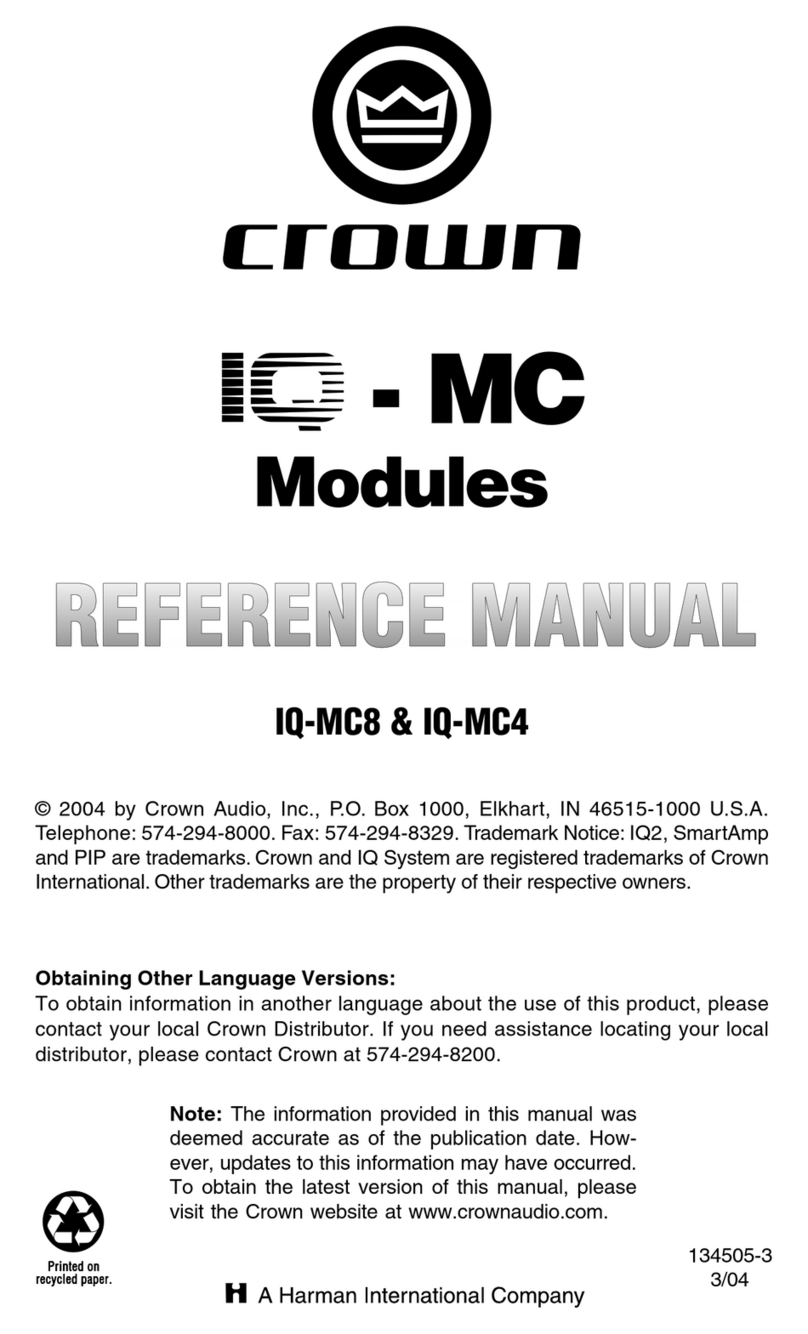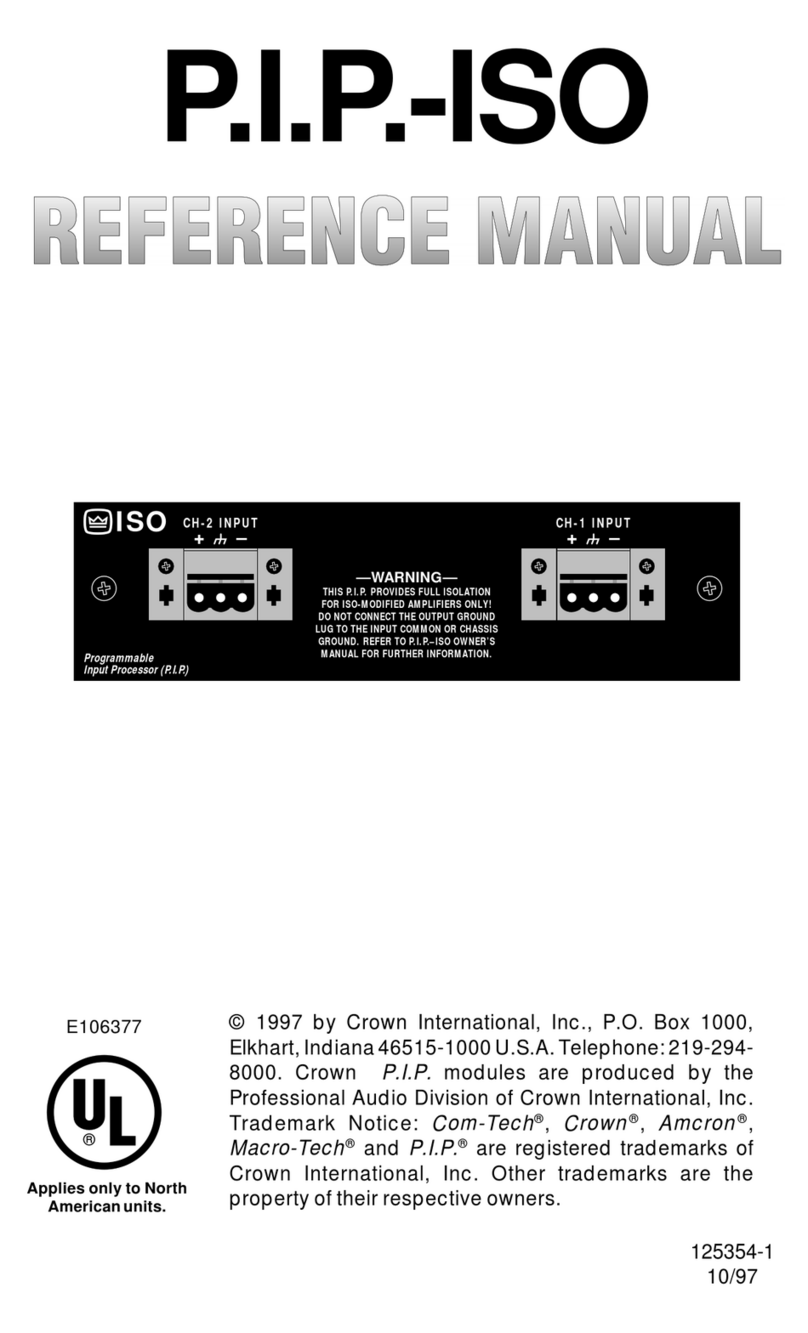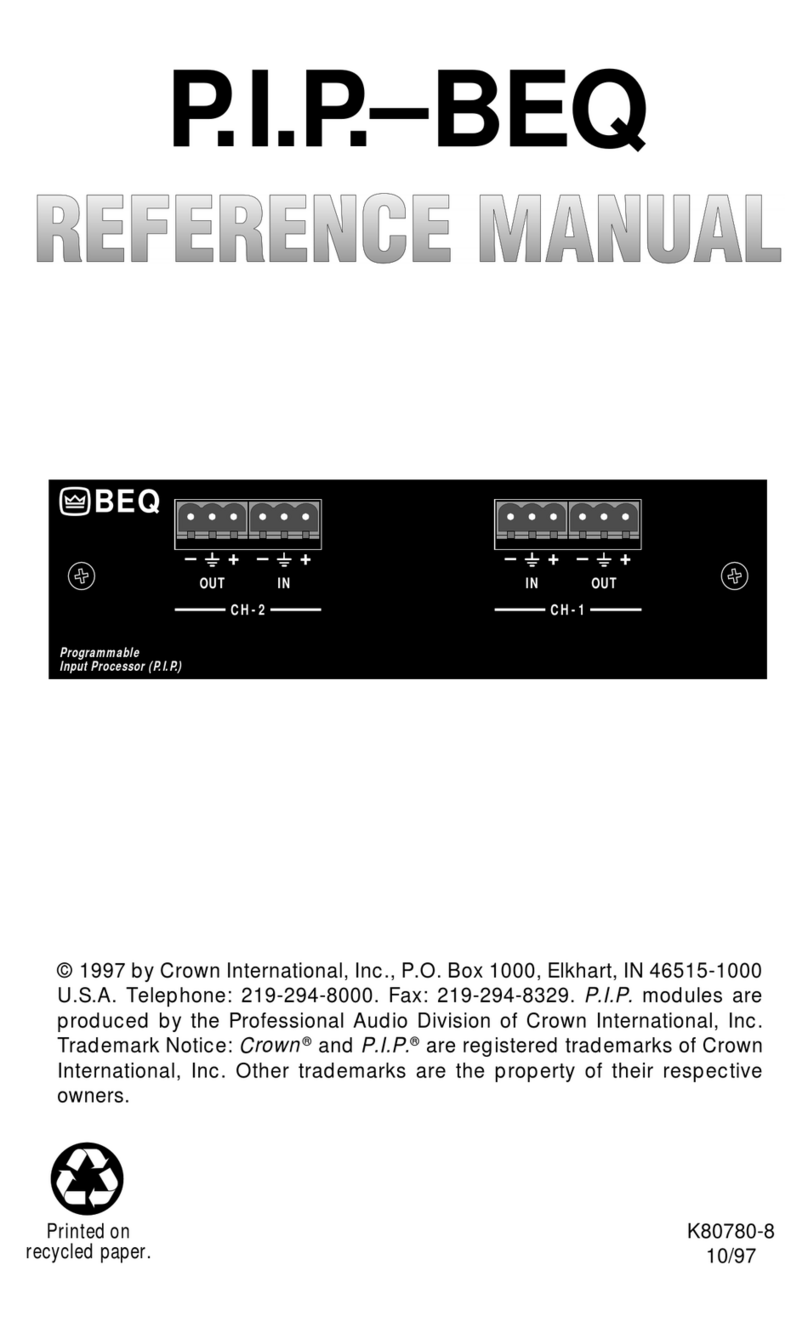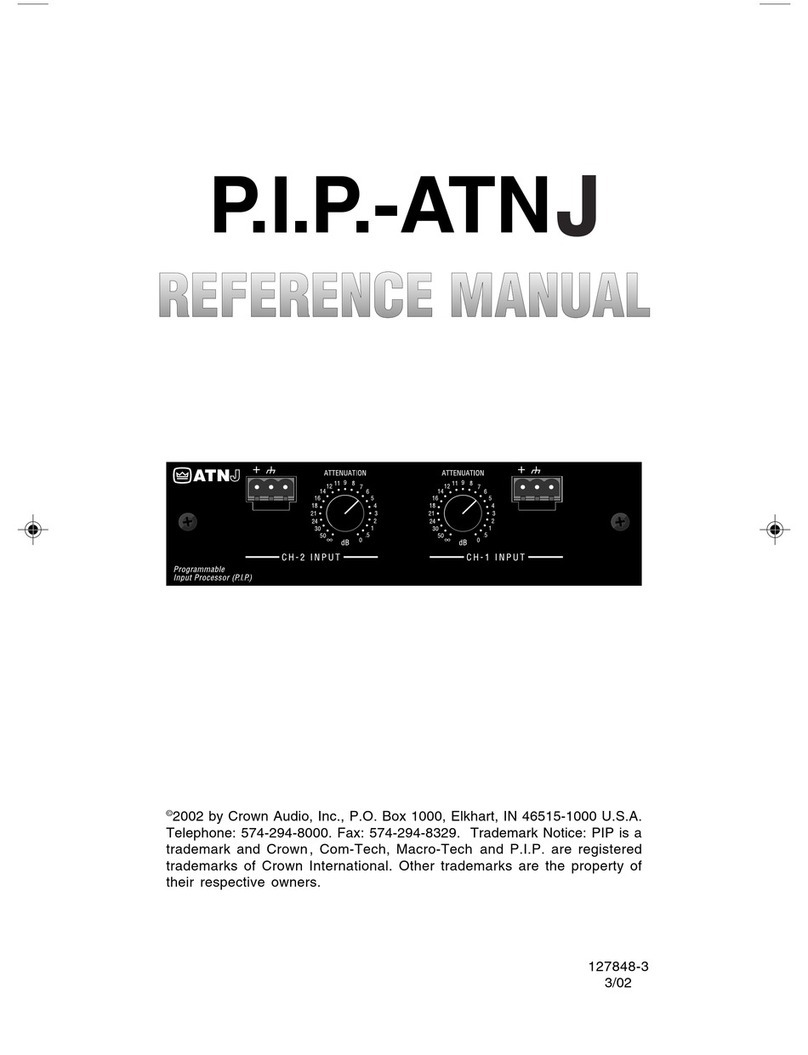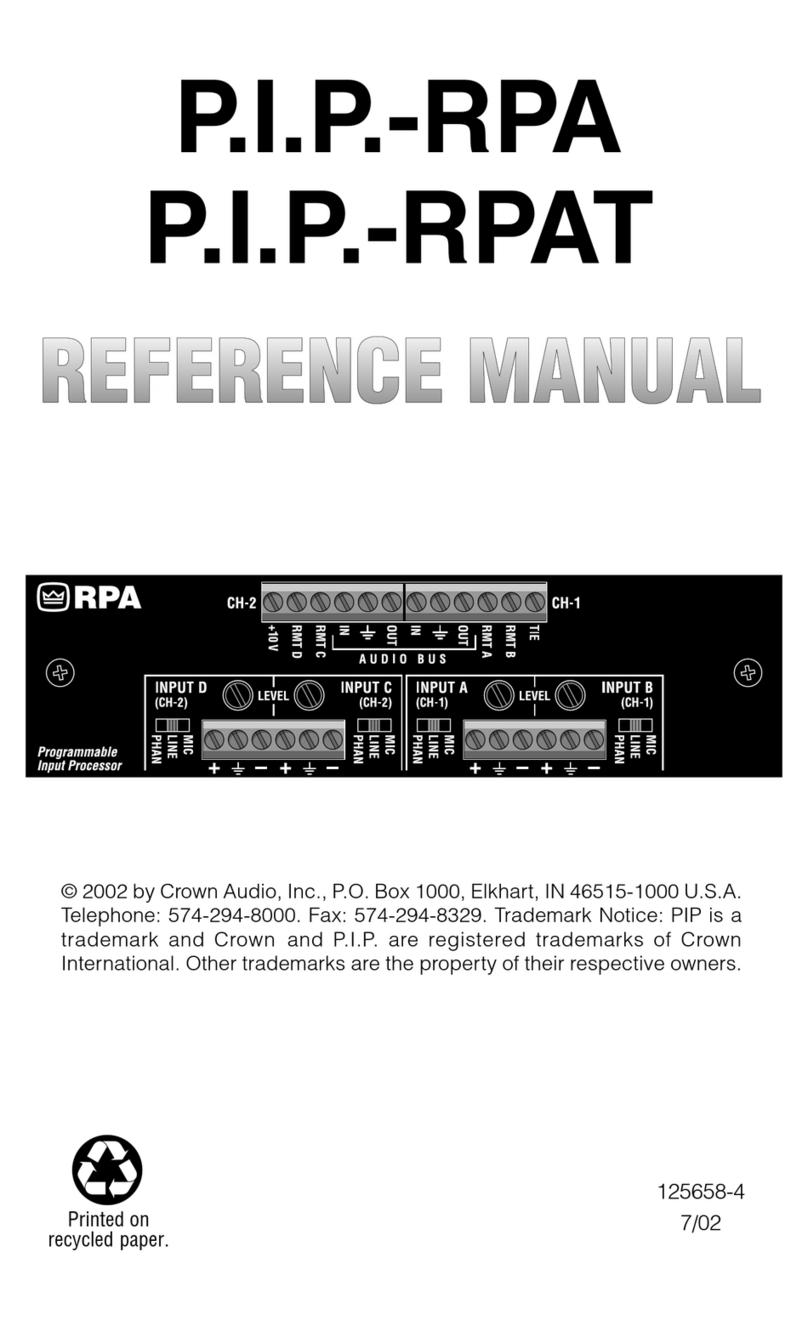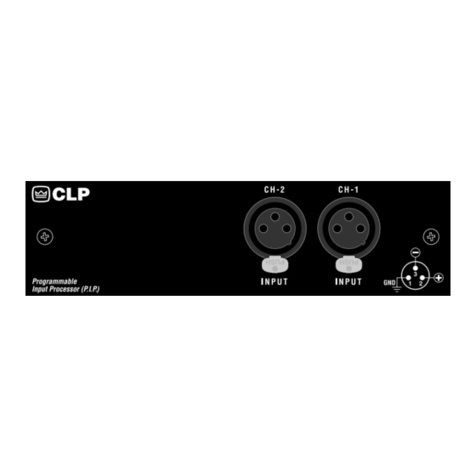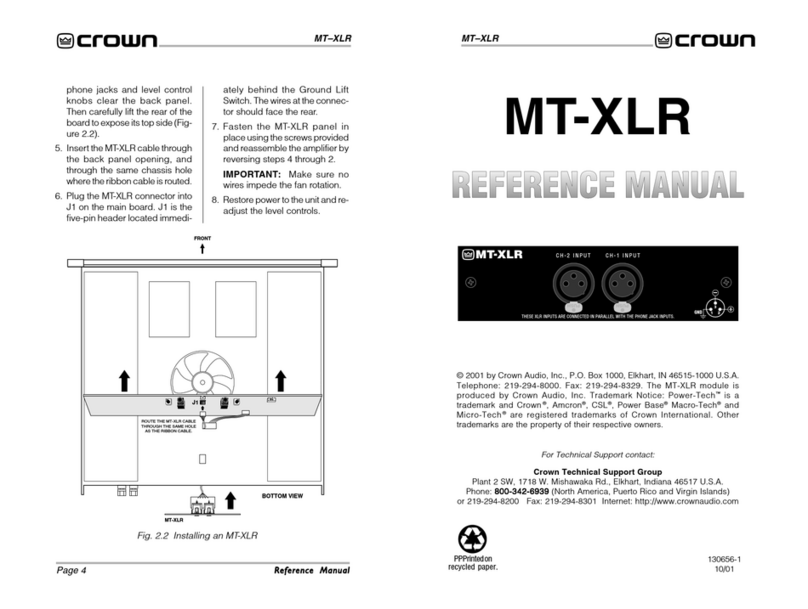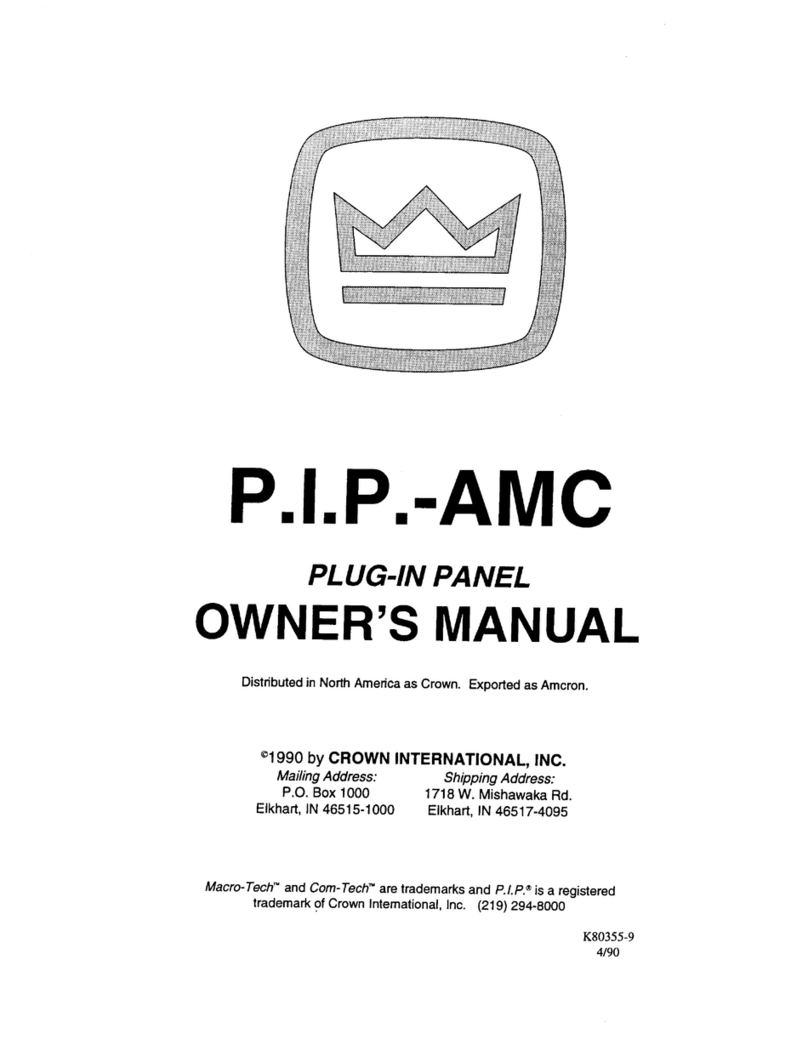P.I.P.–FTE
Page 7
input adapter is already
present,donotremovetherib-
bon cables from the adapter.
Otherwise you will have to re-
connect them in the next step.
3.
StandardP.I.P.Amplifiers
:Align
the edges of the
P.I.P.–FTE
in
the
P.I.P.
card rails and firmly
pushtheunitinuntilitisseated
against the mounting bracket
(see Figure 3.3).
PIP2 Amplifiers:
(Requires a
PIP2
inputadaptor.Crownpart
number Q43528-1.) Connect
the
PIP2
input adapter to the
two input cables of the ampli-
fier(seeFigure3.4).Noticethat
the
PIP2
input adapter should
be positioned with the
P.I.P.
edgeconnectorontopandfac-
ing away from the amplifier.
The 20 pin cable (A) is con-
nectedfirstthenthe18pincable
(B) is connected. Both ribbon
cables should extend below
the
PIP2
input adapter.
Next, insert the edge connec-
tor of the
P.I.P.–FTE
into the
PIP2
inputadapter(seeFigure
3.5) and insert the assembly
into the
P.I.P.
opening in the
back of the amplifier.
4. Secure the
P.I.P.–FTE
with the
two screws and lock washers
provided. (The lock washers
are important because they
bond the
P.I.P.
to the chassis
ground of the amplifier.)
5. Connectinputandoutputwir-
ing.
6. Plug in the amplifier and turn it
on.Adjustitslevelcontrolstoa
desired setting.
Do not tamper with the circuitry.
Circuit changes made by unau-
thorized personnel, or unautho-
rized circuit modifications are not
allowed.
Remember: Crown is not liable
for any damage resulting from
overdriving other components in
your sound system.
Figure 3.6 shows how to wire a
balancedandunbalancedsource
or daisy-chain output to the bar-
rier block connectors.
Important:Iftheamplifierisused
in either Bridged-Mono or Paral-
lel-Monomode,youmustturnthe
Ch. 2 amplifier level control off
(fully counterclockwise). The in-
put and level control of Ch. 2 are
not defeated in mono mode so
any signal applied to Ch. 2 will
beat against the signal in Ch. 1.
Refer to the amplifier
Reference
Manual
formoreinformationabout
Bridged-Mono or Parallel-Mono
modes of operation.
